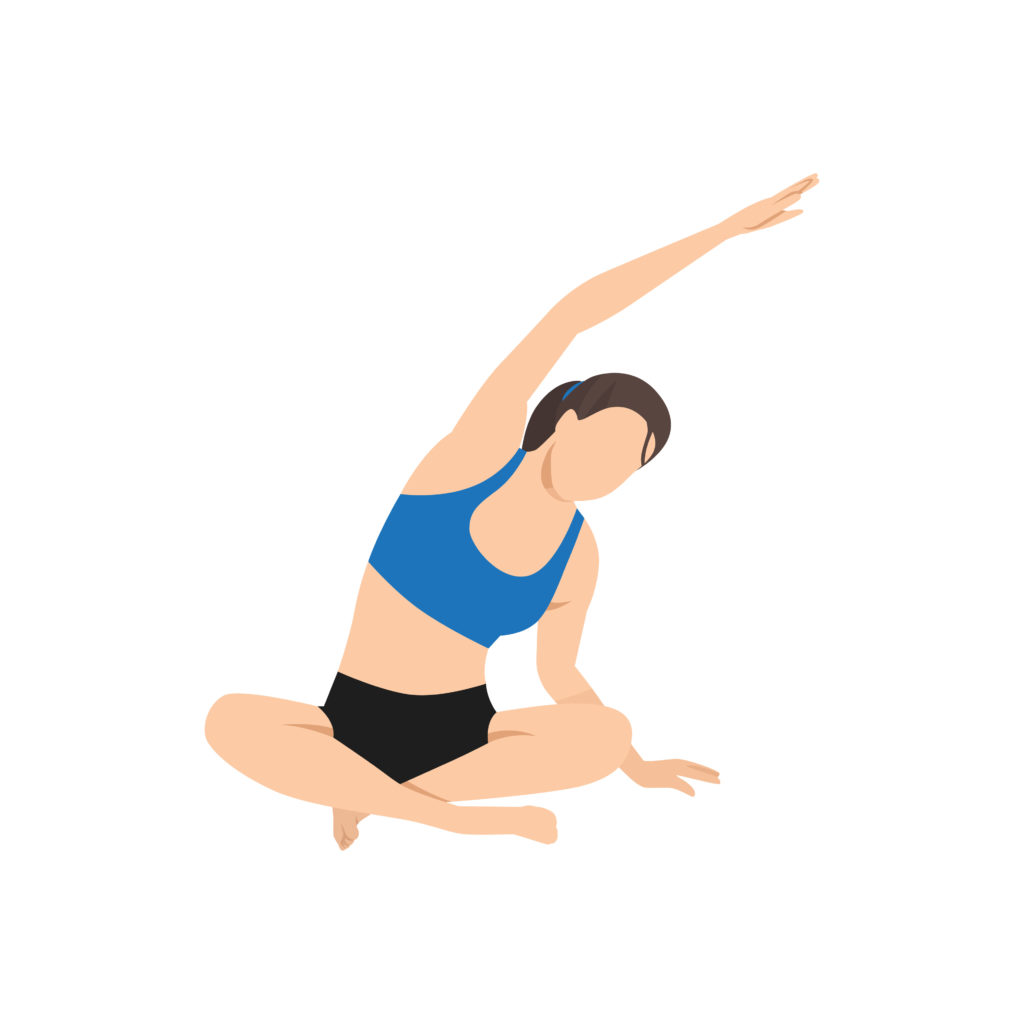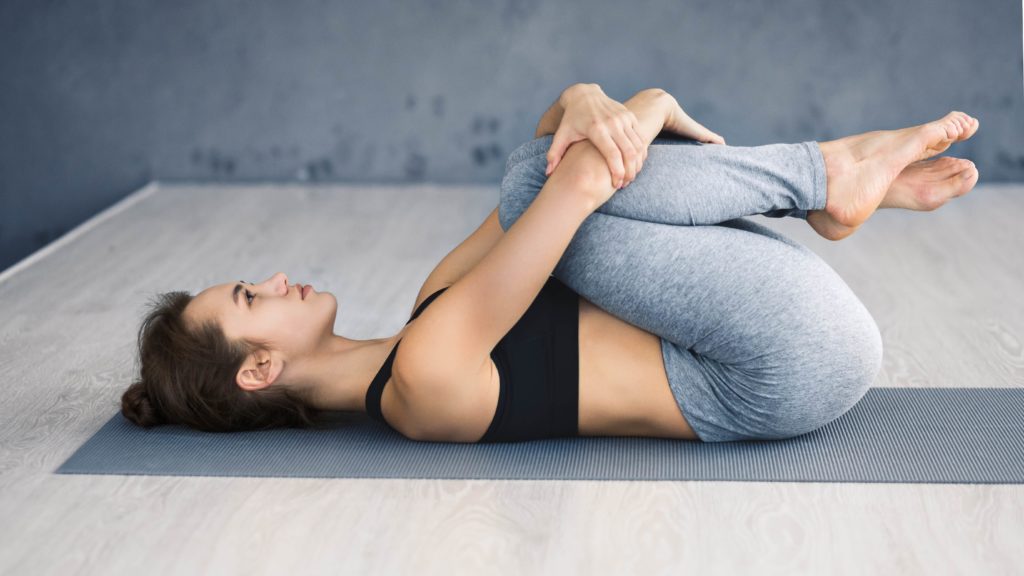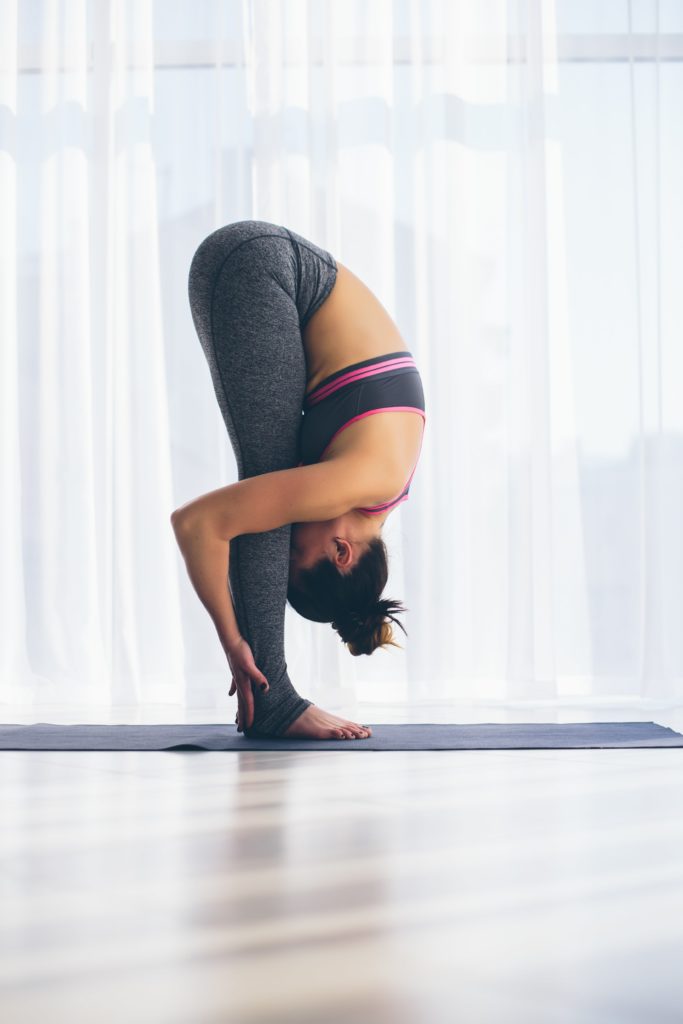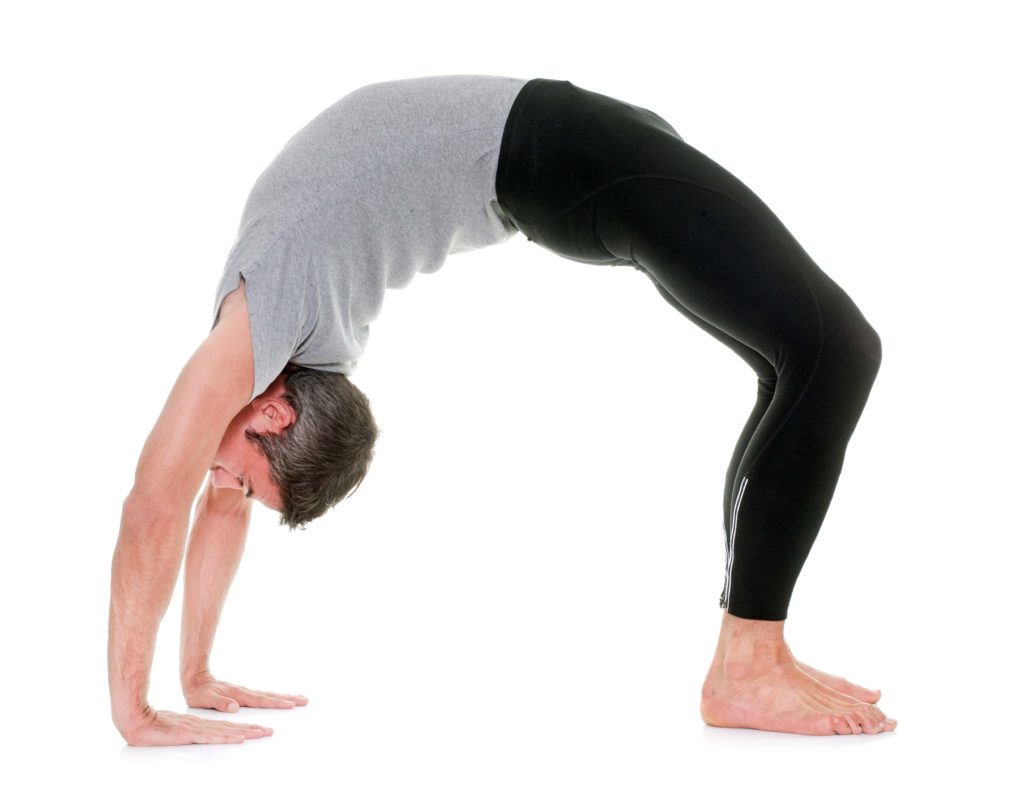Trust your gut instinct!” “My gut is telling me this is wrong!” We all have often heard and spoken of our gut instinct. But what does gut mean? Anatomically speaking, your digestive organs comprise your gut. Your intestines form a large part of your gut and actively participate in most digestive functions.

Like every other part of your body, you need to nurture your gut with a nutritious diet and a healthy dose of exercise. Yoga is an excellent choice of physical activity to ensure good gut health. Yoga asanas and Pranayama stimulate healthy digestion and also boost your metabolic functions.
Nurture Your Gut Health With These Yoga Poses
Let us learn five Yoga postures that are a great way to maintain a healthy gut and enjoy a better lifestyle.
1. Halasana
The ‘plow pose,’ or Halasana, is a recumbent Yoga posture stimulating your digestive tract by massaging your intestines. Halasana has a specific affinity towards the colon and enhances your bowel movements.
Steps of Halasana
- Sit straight with your legs outstretched, and align a stack of folded towels or sheets behind your buttocks.
- Lie down, so the folded stack supports your lower back without causing postural discomfort.
- Keep your neck neutral, so there is space between the ground and your neck.
- Gradually bend your knees while resting your feet on the ground. Now straighten your knees so that your feet are facing the ceiling.
- Lift your hips off the floor by supporting your buttocks with your hands.
- Stretch your legs backward until your toes touch the ground behind your head. If you cannot stretch your legs back adequately, keep your toes as close to the ground as possible.
- Carefully release your hands from your hips and place them straight on the ground. Touch your palms to the floor, or clasp your fingers without bending your elbows.
- Keep your belly muscles taut throughout Halasana to support your body posture.

Hold your body in Halasana for 5-10 breathing counts before gradually relaxing your legs back on the ground. Halasana is an excellent Yoga posture to reduce the effects of constipation, Irritable Bowel Syndrome, and sluggish digestion.
2. Parsva Sukhasana
Parsva Sukhasana is a seated side-bending Yoga posture. The asana is an advanced variation of the simple cross-legged sitting pose that stretches and stimulates your digestive tract. Parsva Sukhasana is an excellent exercise to eliminate belly fat and tone your core.
Steps for Parsva Sukhasana
- Sit straight with your legs stretched in the front.
- Bend your right knee and bring your right foot close to the inner side of your left thigh.
- Now bend your left knee and rest your left foot close to the inner side of your right thigh to assume a cross-legged posture. (Follow these three steps to complete the Sukhasana pose)
- Elevate your left arm as you inhale. Bend to your right while exhaling, and stretch your left arm towards the right side as much as possible. Rest your right hand on the floor for better support.
- Alternatively, you may stretch your right leg to the side and hold your right shin for support as you bend.
- Return to a neutral position after 5-10 breathing cycles and repeat the posture by bending to the left side.
VARIATION 1

VARIATION 2

Parsva Sukhasana is a great way to stretch and warm your body before beginning your Yoga class. The seated side bend is not only beneficial for your digestion but also boosts your blood circulation and lung functions.
3. Apanasana
Apanasana is the lying-down Yoga pose that stimulates intestinal movements and relieves abdominal bloating. Apanasana is also known as Pawanmuktasana (wind-relieving pose) as it provides relief from a gassy belly.
Steps of Apanasana
- Lie down with your back, head, and limbs touching the floor. Keep your arms and legs straight in a relaxed manner.
- Now join your feet and gradually bend your knees until your thighs touch your chest.
- Hug your shins and try to grip the opposite elbows with your hands.
- Relax your neck by tucking your chin slightly downward.
- Once you balance your posture, rock your body gently from side to side.

Continue normal breathing during Apanasana to make the posture more effective. Apanasana is also helpful for relaxing your shoulders and strengthening your arm muscles.
4. Hastapadasana
Hastapadasana is a Yogic standing forward bend that massages your abdominal organs and is a great way to obtain relief from sluggish digestion. A hyperactive acid-peptic reflex and constipation also respond well to Hastapadasana.
Steps of Hastapadasana
- Stand with your shoulders slightly retracted, your arms straight, and your gaze fixed on the front.
- Elevate your arms parallelly till your fingers point upward and gradually bend forward from the waist.
- Bring your arms downward and rest your palms outside the respective foot.
- If you cannot touch the ground, rest your palms on your shins or the sides of your legs.

Do not hold your breath during Hastapadasana, as that may cause you discomfort. Hastapadasana is excellent for your digestion and also tones your abdominal muscles.
5. Chakrasana
Chakrasana is also known as the wheel pose because of the posture you assume while performing the asana. The wheel pose gives an excellent stretch to your abdominal muscles, intestinal muscles, and digestive organs.
Steps of Chakrasana
- Begin by lying on your back and relaxing your limbs.
- Keep your feet shoulder-width apart and bend your knees. Your feet should touch the ground.
- Bend your elbows and take your arms backward so your palms rest on the floor close to your shoulders.
- Balance your weight equally on your palms and feet and gradually hoist yourself.
- Allow your head to hang back naturally without straining your neck.
- In the final posture of Chakrasana, your head, neck, shoulders, and back should form an arch. Keep your elbows and knees slightly bent throughout Chakrasana to support your body.

Hypertension patients should consult with a certified Yoga trainer before performing Chakrasana. Chakrasana improves your digestive functions but also assists in belly fat loss.
Other Yoga Techniques For Healthy Digestion
Asanas are a small component of the vast and intricate ocean of Yogic knowledge. Other Yoga techniques like meditation, Pranayama, Bandhas, and Mudras also contribute significantly towards maintaining good health. Certain Pranayama techniques and Bandhas are specific to improving your digestive functions.
Yogic techniques, though seemingly straightforward, require great skill and profoundly affect your well-being. You must learn and practice the techniques under a certified Yoga trainer’s guidance to master the art.
Please READ our blog section to learn more about various Yoga techniques and their effects on human health.
How Does Yoga Improve Your Gut Health?
Yoga affects your health at various levels, and its collective effect ensures a balanced and happy lifestyle. Yoga techniques affect digestion by acting on your digestive organs, metabolism, hormonal levels, mental health, and spiritual well-being. Let us see how Yoga asanas and other techniques enhance your digestive functions.
- Yoga asanas and specific Pranayama techniques have a mechanical massaging and stretching effect on your digestive tract. This results in better nutrition assimilation and timely excretion of body wastes and other toxins.
- Yoga calms your mind and acts as a stress-buster, stimulating your digestive functions. People who are irritated or stressed easily are more likely to develop constipation, bloating, or other digestive troubles.
- Meditation and Pranayama play a pivotal role in regulating your sleep cycle. Adequate quality sleep is crucial to control your bowel movements and digestive pattern.
- Yoga stimulates a healthy hormonal cycle that, in turn, controls certain digestive and metabolic functions. Balanced hormonal levels are essential for healthy digestion.
- Yoga asanas assist in healthy weight loss, positively affecting your metabolic functions. A healthy and balanced metabolism regulates your digestion and ensures good nutrient absorption from your food.
Yoga is a healthy way to balance all your physiological functions and look after your mental and spiritual well-being. Daily practice of Yoga will do wonders for your health and allow you to lead a happier and healthier lifestyle.







